当前位置:网站首页>v-if VS v-show 2.0
v-if VS v-show 2.0
2022-07-05 03:27:00 【Look at the universe】
v-show And v-if The difference between
- Different means of control
- The compilation process is different
- Compilation conditions are different
Control means : v-show The operation that hides this element is css, bring display:none,dom The elements are still there ; however v-if Hiding this element is directly from dom Node delete element .
The build process : v-if The switch has a partial compilation / Uninstallation process , The switching process appropriately destroys and rebuilds internal event listeners and subcomponents .v-show It's simply based on css Switch .
Compile conditions : v-if Is the real conditional rendering , It ensures that the event listeners and subcomponents in the condition block are properly destroyed and rebuilt during switching , Only when the rendering condition is false , Do not operate , Not until it's true .
v-show from false Turn into true The component life cycle will not be triggered when
v-if from false Turn into true When , Trigger component beforeCreate、create、beforeMount、mounted hook , from true Turn into false When the component is triggered beforeDestory、destoryed Method Performance consumption :v-if Higher switching consumption ;v-show There is a higher initial render cost ;
v-if Relearn the reusability of elements
As mentioned in the previous article Vue Render elements as efficiently as possible , Often reuse existing elements rather than rendering from scratch .
In use at this time v-if When switching, we found , When switching between two tags with basically the same content , Here is an example element-ui The form elements inside <el-form>
<!-- Mobile number registration -->
<view v-show="isPhone">
<el-form :model="ruleForm" :rules="rules" ref="ruleForm" label-width="100px" class="demo-ruleForm">
<el-form-item v-if="isPhone":label="i18n.sjhm" prop="phone">
<el-input v-model="ruleForm.phone" :placeholder="i18n.qtxndsjh" class="rule-input">
<el-select v-model="phoneArea" slot="prepend" class="num-style">
<el-option label="+86 mainland " value="+86"></el-option>
<el-option label="+852 Hong Kong " value="+852"></el-option>
<el-option label="+853 Macau " value="+853"></el-option>
</el-select>
</el-input>
</el-form-item>
<el-form-item :label="i18n.yzm" prop="code">
<el-input v-model="ruleForm.code" :placeholder="i18n['qsryzm']"></el-input>
<el-button type="text" v-if="!phone_change" class="get-code" @click="openTestCode">{
{i18n.hqyzm}}</el-button>
<el-button type="text" v-if="phone_change" class="get-code" disabled>{
{time}}s{
{i18n.hcxhq}}</el-button>
</el-form-item>
<el-form-item :label="i18n.password" prop="password">
<el-input type="password" v-model="ruleForm.password" :placeholder="i18n.qszndmm" auto-complete="off"></el-input>
</el-form-item>
<el-form-item :label="i18n.qrmm" prop="again_password">
<el-input type="password" v-model="ruleForm.again_password" :placeholder="i18n.qqrndmm" auto-complete="off"></el-input>
</el-form-item>
<el-form-item>
<el-button @click="resetForm()">{
{i18n.return}}</el-button>
<el-button type="primary" @click="register()">{
{i18n.ljzc}}</el-button>
</el-form-item>
</el-form>
</view>
<!-- Email registration -->
<view v-show="!isPhone">
<el-form :model="ruleForm" :rules="rules" ref="ruleForm" label-width="100px" class="demo-ruleForm">
<el-form-item v-if="!isPhone" :label="i18n.yxyx" prop="email">
<el-input v-model="ruleForm.email" :placeholder="i18n.qtxndyx"></el-input>
</el-form-item>
<el-form-item :label="i18n.yzm" prop="code">
<el-input v-model="ruleForm.code" :placeholder="i18n['qsryzm']"></el-input>
<el-button type="text" v-if="!phone_change" class="get-code" @click="openTestCode">{
{i18n.hqyzm}}</el-button>
<el-button type="text" v-if="phone_change" class="get-code" disabled>{
{time}}s{
{i18n.hcxhq}}</el-button>
</el-form-item>
<el-form-item :label="i18n.password" prop="password">
<el-input type="password" v-model="ruleForm.password" :placeholder="i18n.qszndmm" auto-complete="off"></el-input>
</el-form-item>
<el-form-item :label="i18n.qrmm" prop="again_password">
<el-input type="password" v-model="ruleForm.again_password" :placeholder="i18n.qqrndmm" auto-complete="off"></el-input>
</el-form-item>
<el-form-item>
<el-button @click="resetForm()">{
{i18n.return}}</el-button>
<el-button type="primary" @click="register()">{
{i18n.ljzc}}</el-button>
</el-form-item>
</el-form>
</view>
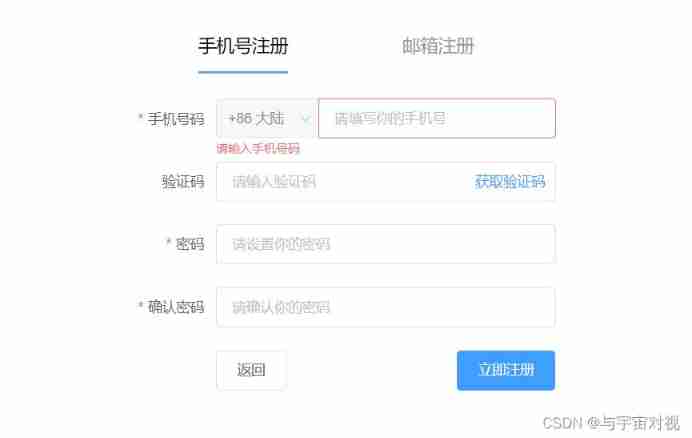
We can see here what I use v-show To switch instead of v-if, Because use v-if When , because <el-form> Inside <el-form-item> Basically, it is the format of input box , This is the use of v-if When switching, elements will be reused , At this time, the red prompt text and style of the first form judgment input box will not be changed in time with the switching of the upper label , Unless we click the input box on the email registration side again, we will make out of focus judgment , Then show the prompt of please enter email .
Use v-show This will not happen , because v-show It is the overall switch between two large forms , There are no reusable elements .

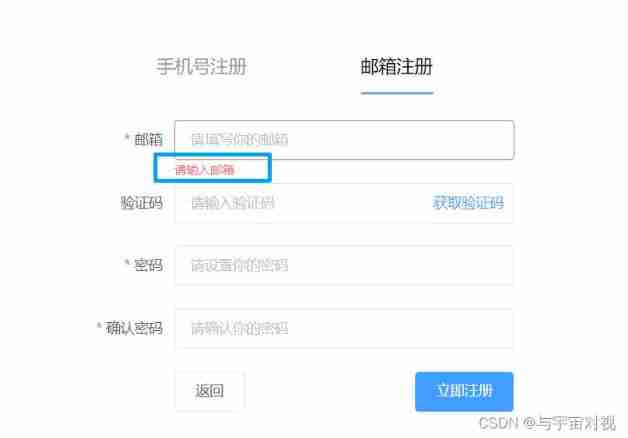
边栏推荐
- Bumblebee: build, deliver, and run ebpf programs smoothly like silk
- Design and implementation of kindergarten management system
- 2021 Li Hongyi machine learning (3): what if neural network training fails
- IPv6 experiment
- What is the most effective way to convert int to string- What is the most efficient way to convert an int to a String?
- SQL performance optimization skills
- Logstash、Fluentd、Fluent Bit、Vector? How to choose the appropriate open source log collector
- 问下,这个ADB mysql支持sqlserver吗?
- Leetcode92. reverse linked list II
- Share the newly released web application development framework based on blazor Technology
猜你喜欢

Vb+access hotel service management system
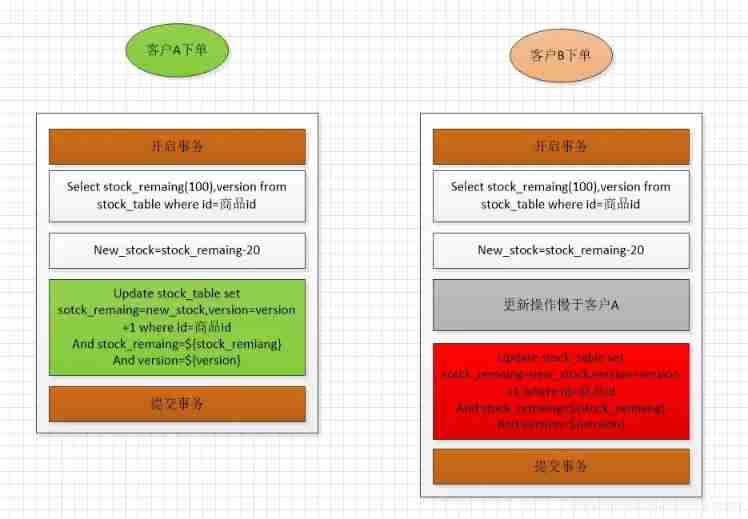
Jd.com 2: how to prevent oversold in the deduction process of commodity inventory?
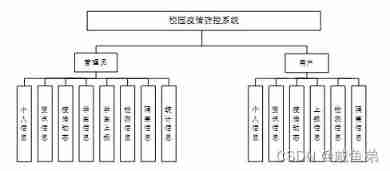
Design and implementation of campus epidemic prevention and control system based on SSM
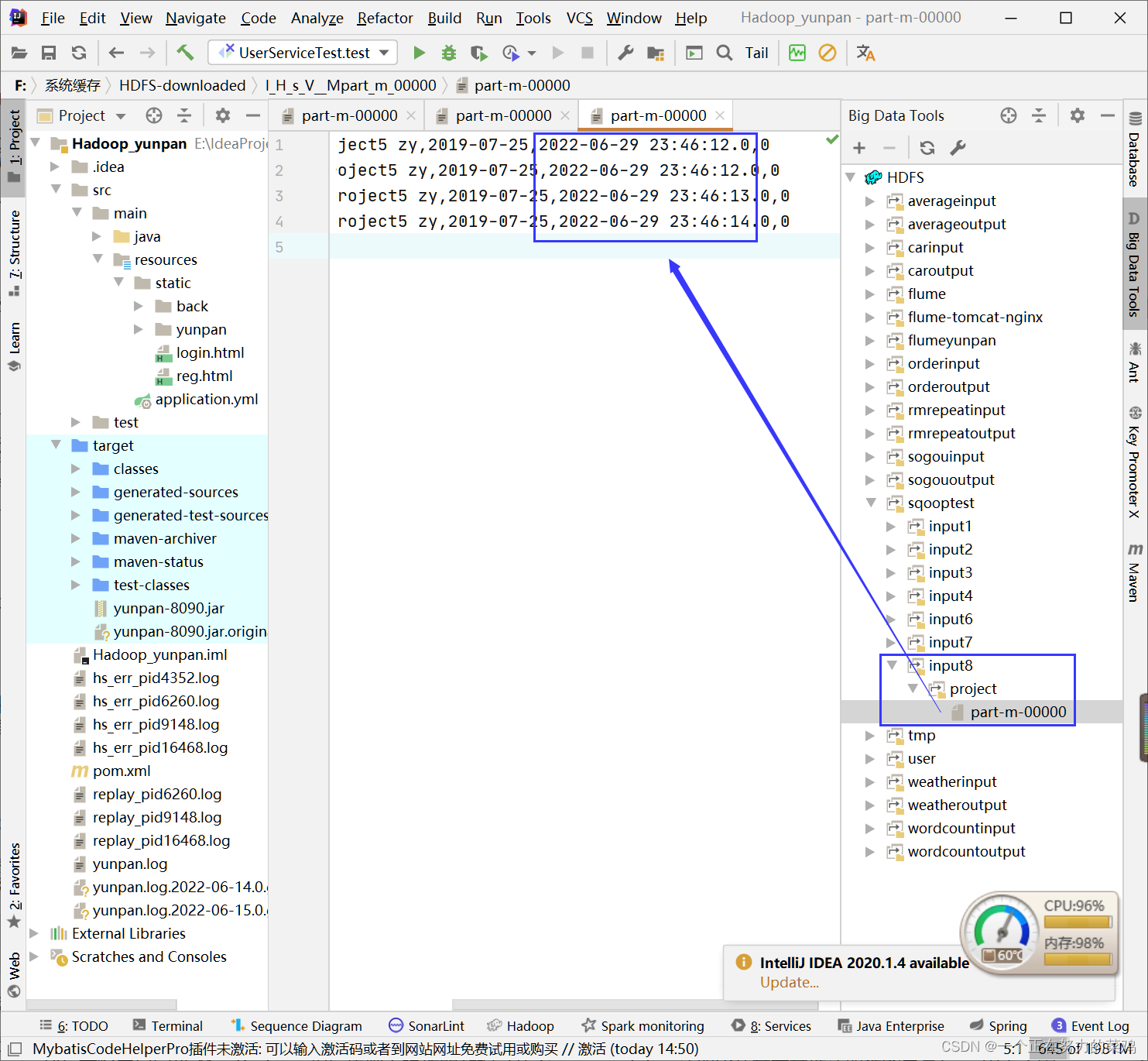
Sqoop command

Utilisation simple de devtools
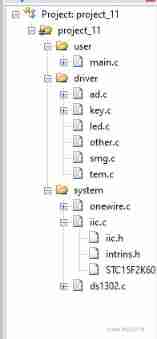
C file in keil cannot be compiled

Devtools的简单使用

Logstash、Fluentd、Fluent Bit、Vector? How to choose the appropriate open source log collector
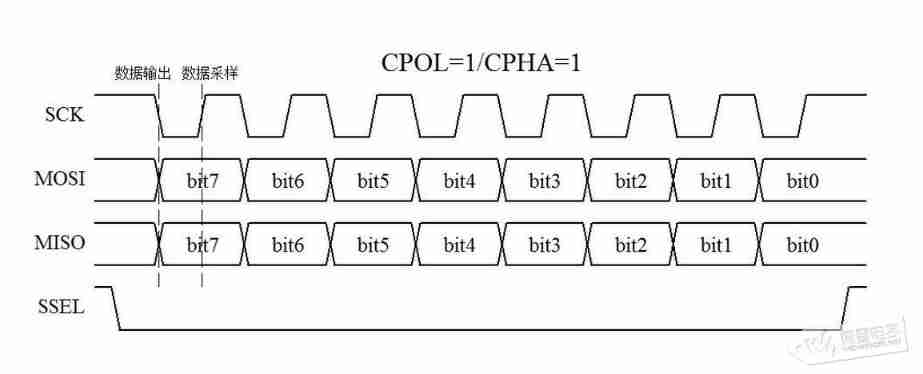
SPI and IIC communication protocol
![[groovy] string (string injection function | asBoolean | execute | minus)](/img/ea/bf1e6aa713cf54e29653e35b164560.jpg)
[groovy] string (string injection function | asBoolean | execute | minus)
随机推荐
Linux安装Redis
About MySQL database connection exceptions
Yyds dry goods inventory intelligent fan based on CC2530 design
2021 Li Hongyi machine learning (3): what if neural network training fails
Usage scenarios and solutions of ledger sharing
Single box check box
New interesting test applet source code_ Test available
1.五层网络模型
MySQL winter vacation self-study 2022 11 (10)
Kuboard
2021 Li Hongyi machine learning (2): pytorch
TCP security of network security foundation
Why do some programmers change careers before they are 30?
Pat class a 1160 forever (class B 1104 forever)
Flume配置4——自定义MYSQLSource
How can we truncate the float64 type to a specific precision- How can we truncate float64 type to a particular precision?
Port, domain name, protocol.
Kbp206-asemi rectifier bridge kbp206
2021 Li Hongyi machine learning (1): basic concepts
Use UDP to send a JPEG image, and UPD will convert it into the mat format of OpenCV after receiving it